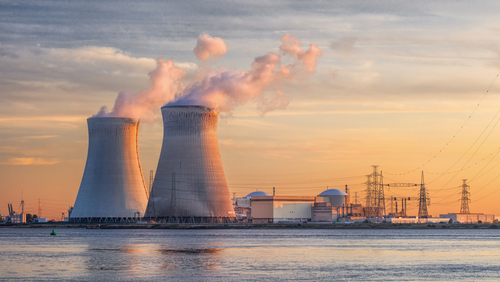Industry Insight
Artificial intelligence and hyperscale data centers are reshaping America’s electricity demand. These facilities require continuous, high-density loads that rival heavy industry. Reliability is non-negotiable. Nuclear energy, once seen as a legacy technology, is re-emerging as a critical baseload solution. But the real question is not if nuclear is needed. It’s whether utilities can deliver it on time and within budget.
The AI-Driven Demand Surge
Data centers designed for training and inference operate with power requirements closer to steel plants than office buildings. Where utilities once planned for gradual load growth, they now face exponential increases concentrated in hot-spot regions. Traditional planning cycles, measured in decades, are colliding with digital economy timelines measured in months.
This mismatch is forcing utilities and technology companies to reconsider their resource strategies. Long-term power purchase agreements with existing nuclear operators are accelerating. Interest in small modular reactors (SMRs) is rising. But every option comes with the same reality: nuclear is only as valuable as the ability to bring it online reliably.
Why Nuclear Delivery Is Different
Nuclear expansion is among the most complex undertakings in the energy sector. Challenges include:
- Regulatory complexity: Multi-year licensing and approvals require meticulous sequencing.
- Supply chain constraints: Specialized fuels and components face limited domestic capacity.
- Workforce gaps: Highly trained nuclear engineers and operators are aging out with thin replacement pipelines.
- Capital intensity: Even SMRs demand billions in financing and carry reputational risk if projects slip.
These barriers explain why nuclear projects have historically struggled with significant cost and schedule overruns, often exceeding original budgets by substantial margins. In today’s environment, those outcomes are unacceptable. The capital markets funding this buildout and the data economy depending on it will not tolerate decade-long delays.
Where Programs Fail
From our vantage point, nuclear programs stumble less on technology and more on delivery discipline:
- Overconfidence in schedules: Projects assume aggressive timelines without embedding buffers for regulatory or supply chain risk.
- Fragmented governance: Multiple contractors and agencies manage pieces of the work with no single entity accountable for integration.
- Reactive risk management: Contingency planning is treated as an afterthought rather than a core design element.
The result: cost curves that drift upward year after year, and schedules that slip from seven years to ten or more.
What Works in Practice
Programs that succeed in nuclear delivery share a consistent set of execution disciplines:
- Integrated program governance. Clear decision rights and escalation paths reduce churn when regulators, contractors, and operators intersect.
- Early procurement strategies. Utilities that secured fuel and long-lead components up front have avoided multi-year delays when shortages emerged.
- Digital project controls. Real-time dashboards for cost, schedule, and risk replace quarterly reporting cycles, allowing leaders to correct course quickly.
- Workforce continuity. Structured pipelines and knowledge-transfer programs stabilize crews through decade-long construction horizons.
These practices don’t eliminate complexity, but they narrow variance. In other capital programs, utilities with mature controls sustain schedule adherence in the 75-85% range versus 55-65% for those without. That gap compounds into billions saved and years regained.
Proof From the Field
Industry patterns show the impact:
- Utilities that front-loaded procurement of reactor components avoided delays of 18–24 months seen elsewhere.
- Integrated program offices coordinating engineering, procurement, and construction cut change-order frequency by more than a third.
- Early workforce planning reduced commissioning delays by stabilizing shift coverage at critical milestones.
These aren’t theoretical improvements, they’re what distinguishes nuclear programs that reach completion from those that stall indefinitely.
Strategic Implications
For utilities, the nuclear revival isn’t about technology adoption alone. It’s about whether program structures can match the scale of AI-driven demand. Data centers, regulators, and investors are aligning around nuclear as the most reliable baseload option. But without delivery discipline, those commitments risk turning into stranded capital.
For technology companies, the lesson is similar. Securing nuclear power is not just about signing contracts, it’s about selecting partners with demonstrated program management maturity. The difference between a seven-year and a twelve-year project can determine whether entire regions capture or lose out on digital infrastructure investment.
CARIAN’s Perspective
At CARIAN, we approach nuclear not as a policy debate but as a program execution challenge. We’ve supported capital programs where early supply chain coordination avoided multi-year equipment delays, and where integrated controls reduced variance from the high teens to single digits.
For utilities exploring nuclear whether through plant life extensions, SMRs, or partnerships with technology firms, the differentiator will be execution independence, program controls, and governance discipline. These are the levers that turn ambition into megawatts delivered.
The Next Decade
The nuclear question is no longer about relevance. It’s about whether utilities can deliver at the speed and scale the digital economy demands.



